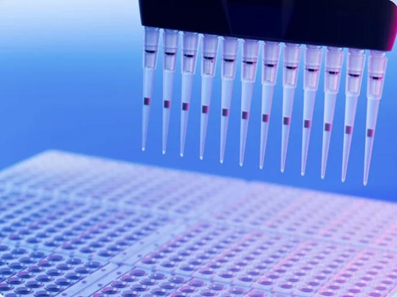In vitro ADME (Absorption, Distribution, Metabolism, and Excretion) assays evaluate the behavior of biologics within biological systems. However, the reliability of these assays in predicting the biological fate of complex biologics remains a matter of scrutiny. Biologics, such as monoclonal antibodies and recombinant proteins, possess unique structural and functional characteristics that present novel challenges compared to small-molecule drugs. Therefore, understanding the factors that affect the reliability of in vitro adme assays is crucial for accurate predictions. This blog explores the complexity of biologics, evaluates the predictive accuracy of these assays, and examines technological advancements that enhance their reliability. We aim to shed light on the current challenges and advances impacting the field of biologics’ in vitro ADME testing.

Factors that Determine Test Reliability
There are many factors that determine the reliability of in vitro ADME testing of biologics.
Structural and Functional Complexity of Biologics
Biologics are large, structurally complex molecules characterized by a high degree of heterogeneity. These molecules, including antibodies, enzymes, and hormones, have unique 3D structures that can influence their stability, solubility, and bioavailability. The structural complexity of biologics allows them to perform highly specific biological functions, which can vary greatly depending on their molecular architecture. This variability poses challenges in predicting how these compounds will behave in biological systems using traditional in vitro assays designed for small molecules. As the behavior of biologics is intricately linked to their structural conformation, it is crucial to develop specialized assays that can accommodate these complexities. These assays must account for unique degradation pathways and the possibility of immunogenic responses, factors not typically encountered with small molecules.
Predictive Accuracy and In Vitro–In Vivo Correlation
Achieving predictive accuracy in in vitro ADME assays for biologics is challenging due to poor in vitro-in vivo correlation (IVIVC). In vivo studies often reveal insights into systemic circulation, tissue distribution, and elimination pathways of biologics, which current in vitro models may not effectively predict. Factors such as protein binding, which alter pharmacokinetics in complex ways, are areas where in vitro assays struggle to mirror in vivo realities accurately. Consequently, bridging the gap between in vitro findings and in vivo data requires enhanced assay designs that consider the full biological context in which biologics operate. This may include the incorporation of human-derived cells and more physiologically relevant conditions to boost IVIVC, increasing the predictive power of in vitro assays for biologics.

Advancements in In Vitro Models and Assay Technologies
Recent advancements have enhanced the reliability of in vitro ADME assays for biologics. Deploying more physiologically relevant models, like 3D cultures and organ-on-a-chip technologies, can better simulate human biology. These models offer dynamic environments that mimic the in vivo state, providing more accurate data on biologics’ ADME properties. Moreover, utilizing advanced analytical techniques such as mass spectrometry allows for precise measurement of biologics’ pharmacokinetics and pharmacodynamics. Combining these models with innovations like cell-based biosensors gives a more comprehensive understanding of biologics’ behavior. Such technological strides are crucial in providing researchers with the tools to accurately predict how biologics will perform therapeutically.
Technological Advances that Enhance Detection Reliability
Advancements are key to enhancing the reliability of in vitro ADME assays for biologics.
Integration of In Silico Modeling and PBPK Approaches
In silico modeling and Physiologically-Based Pharmacokinetic (PBPK) approaches significantly enhance the predictive capabilities of ADME assessments for biologics. In silico models use mathematical algorithms to simulate biological processes, providing insights into how biologics distribute, metabolize, and excrete. When used alongside PBPK models, which incorporate physiological parameters and drug properties, in silico techniques help predict biologics’ behavior in humans more accurately. They offer the advantage of assessing different hypothetical scenarios, saving time, and reducing the reliance on extensive laboratory testing. This integration into ADME testing represents a paradigm shift, providing a means to foresee potential clinical outcomes and refine the development processes early on.
Development of More Representative In Vitro Models
Developing in vitro models that accurately mimic human physiological conditions is critical for the effective study of biologics. Conventional two-dimensional cell cultures fall short in replicating the complex interactions within human tissues. Innovations such as three-dimensional cultures, co-culture systems, and microfluidic devices, however, provide environments that better simulate the in vivo state. Organs-on-chips, for example, replicate organ functions and interactions, offering a more realistic setting for studying ADME properties. These advanced models allow researchers to observe biologics’ behaviors in context, leading to more predictive and reliable results. Ongoing refinement and adoption of these models are essential for bridging gaps between in vitro findings and clinical realities.
Use of High-Throughput Screening and Automation
High-throughput screening and automation revolutionize in vitro ADME testing by increasing efficiency and throughput. These technologies enable rapid evaluation of multiple biologic candidates simultaneously, accelerating the discovery process. Automation minimizes human error, ensuring consistent and reproducible results. High-throughput screening allows for the assessment of vast compound libraries and data analysis in a fraction of the time. This technological capability is crucial for optimizing lead candidates, providing a comprehensive understanding of ADME properties early in the drug development process. Through automation, researchers can effectively handle the complexities of biologics, ensuring that promising biologic candidates are quickly identified and advanced to the next development stages.
Challenges in Applying In Vitro ADME Assays to Biologics
In vitro ADME assays for biologics face several challenges, including representing complex biological environments accurately in vitro. Biologics often exhibit intricate behaviors due to protein-protein interactions, which traditional assays fail to capture. Variability in biologics’ size and charge also complicates predicting their ADME properties. Moreover, immune responses that biologics might trigger are difficult to replicate outside a living organism. The gap between in vitro results and in vivo outcomes emphasizes the need for innovative models and methodologies. As a result, ongoing research focuses on overcoming these challenges through technological advancements and more representative assay systems, ensuring the effectiveness of in vitro assessments.
Conclusion
The reliability of in vitro ADME assays for biologics hinges on addressing their unique structural and functional complexities. Although significant challenges exist, advancements in modeling approaches and assay technologies are promising. Enhanced in vitro models, combined with in silico predictions, provide pathways for improving predictive accuracy. By bridging the gap between in vitro and in vivo observations, these advancements hold potential for transforming biologics’ development processes. Ultimately, commitment to innovation and adaptation will play a pivotal role in ensuring in vitro ADME assays remain robust tools in the burgeoning field of biologics, aiding in the development of safe and effective therapeutic interventions.